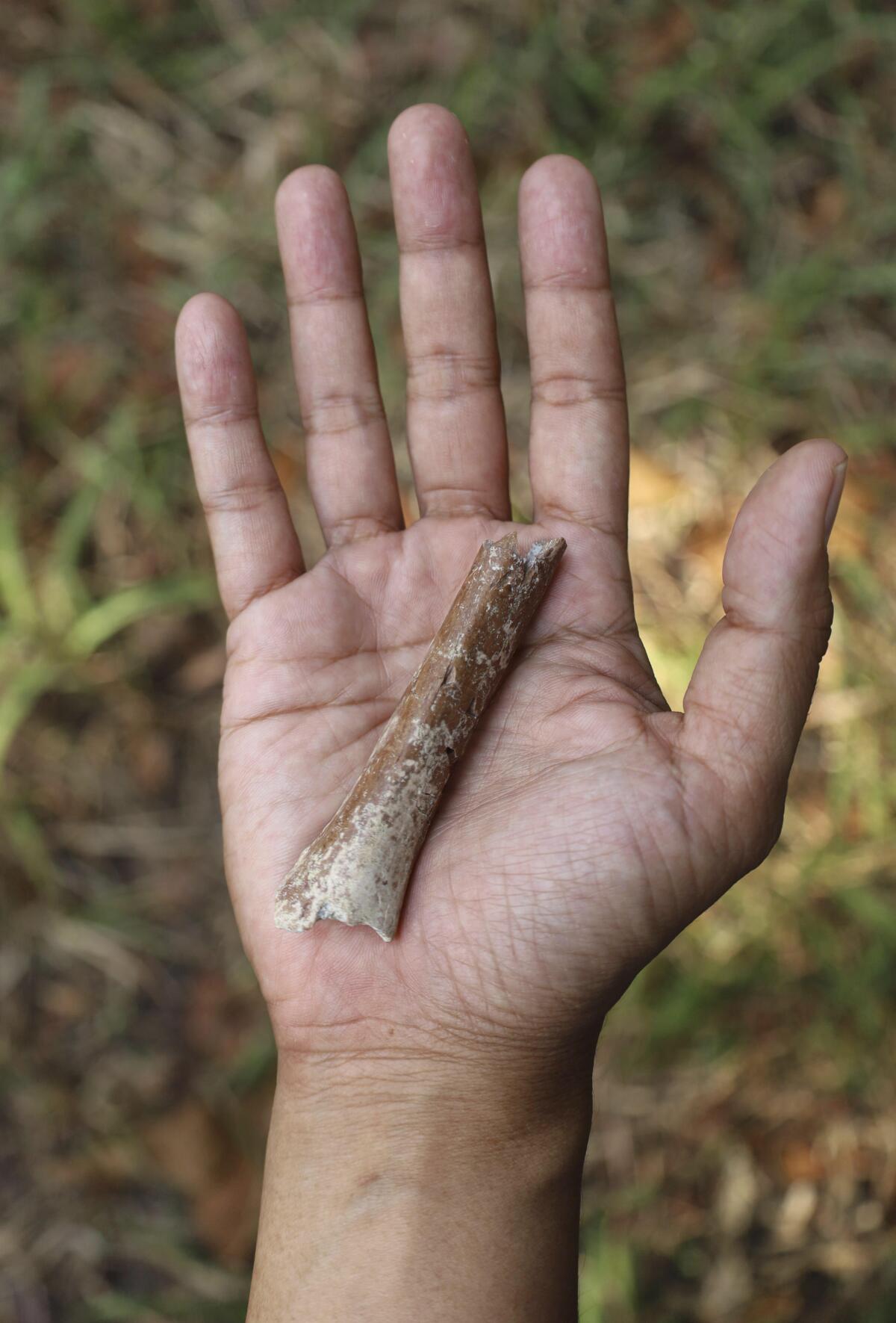Fossils suggest even smaller ‘hobbits’ roamed an Indonesian island 700,000 years ago

- Share via
WASHINGTON — Twenty years ago on an Indonesian island, scientists discovered fossils of an early human species that stood about 3½ feet tall — earning it the nickname “hobbits.”
Now a new study suggests ancestors of the hobbits were even slightly shorter.
“We did not expect that we would find smaller individuals from such an old site,” study co-author Yousuke Kaifu of the University of Tokyo said in an email.
The original hobbit fossils — named by the discoverers after characters in J.R.R. Tolkien’s novels — date back to between 60,000 and 100,000 years ago. The new fossils were excavated at a site called Mata Menge, about 45 miles from the cave where the first hobbit remains were uncovered.
In 2016, researchers suspected the earlier relatives could be shorter than the hobbits after studying a jawbone and teeth collected from the new site. Further analysis of a tiny arm bone fragment and teeth suggests the ancestors were 2.4 inches shorter and existed 700,000 years ago.
“They’ve convincingly shown that these were very small individuals,” said Dean Falk, an evolutionary anthropologist at Florida State University who was not involved with the research.
The findings were published this week in the journal Nature Communications.
Researchers have debated how the hobbits — named Homo floresiensis after the remote Indonesian island of Flores — evolved to be so small and where they fall in the human evolutionary story. They’re thought to be among the last early human species to go extinct.
Scientists don’t yet know whether the hobbits shrank from an earlier, taller human species called Homo erectus that lived in the area, or from an even more primitive human predecessor. More research — and fossils — are needed to pin down the hobbits’ place in human evolution, said Matt Tocheri, an anthropologist at Canada’s Lakehead University.
“This question remains unanswered and will continue to be a focus of research for some time to come,” Tocheri, who was not involved with the research, said in an email.
Ramakrishnan writes for the Associated Press.
More to Read
Sign up for Essential California
The most important California stories and recommendations in your inbox every morning.
You may occasionally receive promotional content from the Los Angeles Times.









